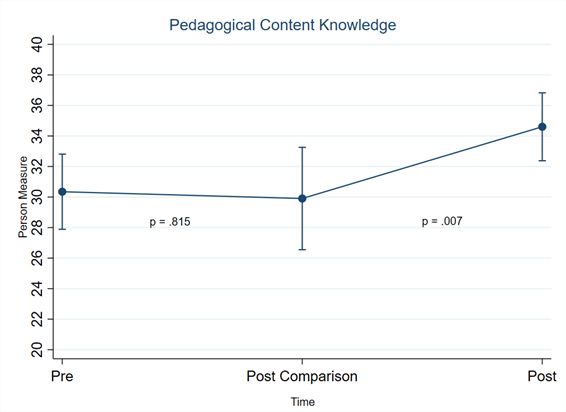
- Blog | Affordances and Challenges of 360 Video in Teacher Education by Karl Kosko
- Featured Projects
- Design and Implementation of Immersive Representations of Practice (PI: Karl Kosko)
- Developing Teacher Noticing in Engineering in an Online Professional Development Program (PI: Jessica Watkins)
- Refining a Model with Tools to Develop Math PD Leaders: An Implementation Study (PI: Hilda Borko)
- Science Teachers Learning From Lesson Analysis (STELLA): High School Biology (PI: Chris Wilson)
- Teaching Amidst Uncertainty: Developing Mathematics Teachers' Groupwork Monitoring Practices (PI: Ilana Horn)
- Understanding and Improving Learning from Online Mathematics Classroom Videos (PI: Michelle Perry)
- Video in the Middle: Flexible Digital Experiences for Mathematics Teacher Education (PI: Nanette Seago)
- Additional Resources
Blog | Affordances and Challenges of 360 Video in Teacher Education
Karl Kosko, Associate Professor, Kent State University
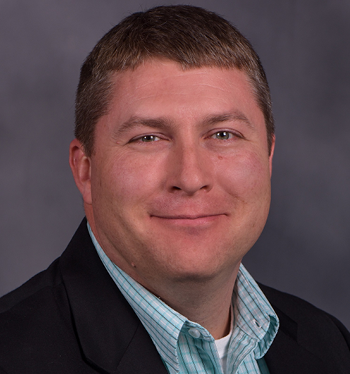
In the spring of 2018, I began recording and studying the use of 360 video for mathematics teacher education with my colleague Rick Ferdig. Following a pilot study, we were fortunate to receive funding from NSF to explore the potential of this medium to facilitate teachers’ professional knowledge and noticing. When I mention 360 video to colleagues, it is often confused as just another Swivl camera – it’s not. Swivl cameras are regular videos created by tracking an individual (or specific individuals) around the classroom. 360 video doesn’t track – it records everything omnidirectionally. It creates a spherical recording such that the viewer chooses which direction to look when watching a recording of a classroom lesson. This affordance gives future teachers the freedom to look anywhere. If the 360 camera is placed between two different groups of students exploring and discussing a mathematics task, one preservice teacher may watch the group on the left more than the one on the right, and another may watch the group on the right more. If we record a classroom with several 360 cameras, we can create a multi-perspective 360 video that allows viewers to “move” from one point in a classroom to another. By increasing the degree of autonomy in where a teacher can “look” in the recorded classroom, some may fear that this large amount of autonomy may be overwhelming to the novice teacher. We argue it is less overwhelming than having such autonomy when entering their first classroom in the role of a preservice teacher...Read More
Featured Projects
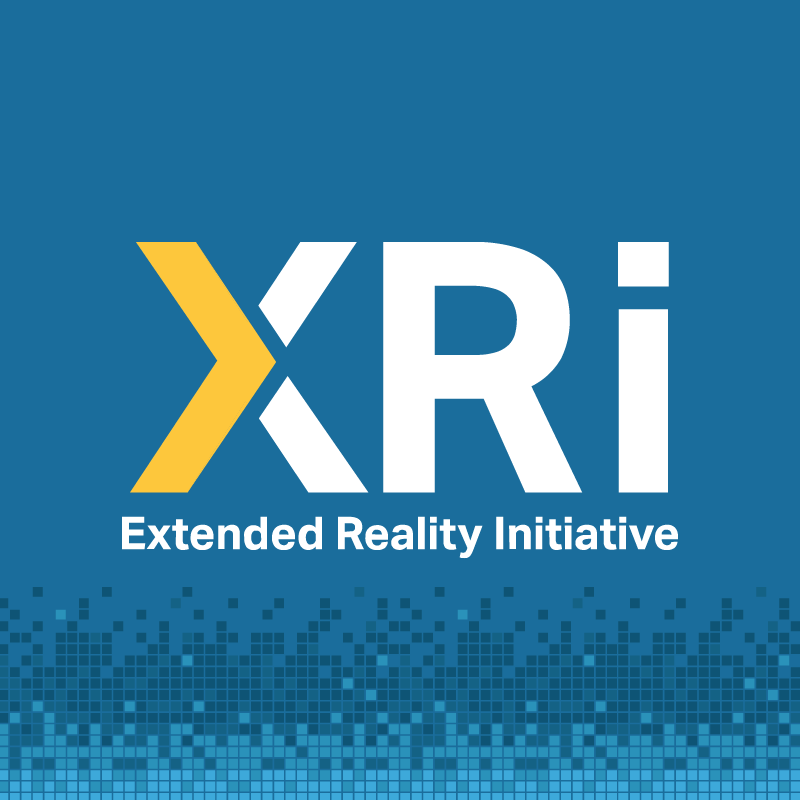 Design and Implementation of Immersive Representations of Practice
Design and Implementation of Immersive Representations of Practice
PI: Karl Kosko
Grade Levels Taught by Teacher Participants: Prospective teachers preparing to teach K – 5
STEM Discipline(s): Mathematics
About the project: The Design and Implementation of Immersive Representations of Practice project explores how immersive video can facilitate teachers’ professional knowledge. Specifically, we are exploring the use of 360 video, which records events in the classroom omnidirectionally. This allows the viewer (not the videographer) to choose where in the classroom to look. Our use of 360 video has allowed us to explore differences in where teachers choose to attend, the duration they focus on specific students, and how these choices associate with their demonstrated professional knowledge and noticing. Our research findings and results suggest that longer duration of focus, as well as more equitable choices of who to attend, are associated with teachers’ professional vision. We have used these lessons to create feedback tools in a 360 viewing platform: Praxi. Using Praxi in mathematics methods courses, we have sought to improve both the research data that can be collected through 360 video viewing and the pragmatic feedback to help facilitate teachers’ professional noticing. In addition to the use of Praxi, we have developed Gaze XR: an eye-tracking software package for use with eye-tracking enabled VR headsets. Additionally, we are implementing basic machine learning features in both applications as tools to facilitate and study professional noticing. By using 360 video to enhance opportunities for teachers’ learning, we are able to make explicit to prospective teachers facets of noticing that were once tacit.
What new knowledge is your project generating about using video for teacher learning?: The project is generating new theory and practice related to the embodied nature of professional noticing, and how professional knowledge informs and affects such actions. For example, we have found “student-centered teaching” to be an embodied metaphor that is characterized by centering students in the center of a teacher’s field of view. Another embodied metaphor is the notion of teachers having “eyes in the back of their head” which is accounted for by the spatial properties of sound (which we explore through application of ambisonic audio in our 360 videos). While this new theoretical knowledge is interesting, it helps to shape knowledge associated with teacher education. Essentially, we are finding new ways to, literally, direct prospective teachers on how to look at their students by making explicit what it means to be student-centered, and what it means not to be.
Product(s):
- Website: https://xr.kent.edu
- Videos:
- Praxi 360 Viewing platform: https://praxi.guans.cs.kent.edu (Beta version). It includes a multi-perspective 360 video for guests to explore (and see the current reporting features under “Watch Summary”
- Website library: https://xr.kent.edu/videos-2/. It includes additional resources not embedded in our YouTube Channel hosted videos.
- XRi YouTube Channel: https://www.youtube.com/channel/UCdNBPA9vZJlP5DO9KswP0iQ/videos, which has a growing library of single-perspective 360 video.
- Publications: https://xr.kent.edu/publications/
- Presentations: https://xr.kent.edu/presentations/
 Developing Teacher Noticing in Engineering in an Online Professional Development Program
Developing Teacher Noticing in Engineering in an Online Professional Development Program
PI: Jessica Watkins
Grade Levels Taught by Teacher Participants: K – 6
STEM Discipline(s): Engineering
About the Project: How can we design asynchronous online professional learning opportunities to support teachers to be more responsive to student thinking? Our project explores this overarching question in the context of the Tufts Teacher Engineering Education Program (TEEP, www.teep.tufts.edu), an 18-month asynchronous online engineering education program for in-service K-12 educators. This graduate certificate program consists of a four-course sequence split between content courses and pedagogy courses. Content courses engage teachers as engineers by diving into engineering content and hands-on design projects while pedagogy courses develop teachers’ pedagogical reasoning and practice in facilitating engineering learning. To date, the program has certified 87 educators in five cohorts from across the U.S and internationally.
Teachers’ discussions of classroom video are a central activity in the pedagogy courses. Prior research documents video discussions can support teachers’ learning, including what they notice in videos and their stances toward student thinking (Rosebery et al., 2016; Sherin & Han, 2004; Tekkumru-Kisa & Stein, 2015; van Es & Sherin, 2008) and how they participate in video discussions (van Es, 2009). However, most of this research took place in face-to-face settings; it is not clear that these results can be replicated in asynchronous online environments given the lack of immediate back-and-forth interactions and limited modalities of communication. Our research explores possibilities for supporting teachers’ learning online in TEEP, particularly how to design for teachers’ productive discussions of classroom video.
What new knowledge is your project generating about using video for teacher learning?:
- We argue that the success of teachers’ video discussions depends on how teachers interpret the activity they are engaged in—how teachers frame what they are doing. Drawing on this perspective, we developed a model for designing and facilitating online asynchronous discussions of classroom video. Our goal was to support teachers to frame these video discussions as opportunities to make sense of student thinking. Implementing this model in TEEP, we analyzed teachers’ comments in online video discussions, finding that teachers were more frequently making sense of, rather than evaluating, student thinking later in the course (Watkins & Portsmore, 2021).
- Our research has also documented progress in teacher learning in TEEP more broadly (Swanson, Watkins, Portsmore, & De Lucca, 2021; Watkins, Portsmore, & Swanson, 2020). We have developed detailed case studies to examine two teachers’ learning through shifts in their pedagogical reasoning in engineering. We have also looked across 11 teachers’ case studies to explore patterns in their shifts in noticing student thinking, pedagogical practices for facilitating engineering learning, and their framing of engineering activities in their classrooms.
- In another strand of work, we examine how teachers draw on dominant discourses of ability hierarchies and individual blame when discussing teaching engineering. We found that teachers could draw on engineering education concepts to reinforce dominant discourses—echoing specific language and preserving given roles, retool—preserving values and beliefs but in new configurations, and disrupt—utilizing different language or roles that (implicitly) challenge dominant discourses (De Lucca, Watkins, Portsmore, & Swanson, under review). These findings invite us to expand our model to consider the role that broader sociopolitical discourses and narratives play in teachers’ framing and noticing in video discussions.
Product(s):
- Watkins, J. and Portsmore, M. (2021). “Designing for framing in online teacher education: Supporting teachers' attending to student thinking in video discussions of classroom engineering.” Journal of Teacher Education.
- Watkins, J., Portsmore, M., and Swanson, R. (2021). “Shifts in teachers’ pedagogical reasoning: Studying teacher learning in an online engineering education program.” Journal of Engineering Education. 110(1), 252-271.
- De Lucca, N., Watkins, J., Swanson, R. D., & Portsmore, M. (2021). “They're like the wizards”: Ideological discourses and engineering epistemologies as resources for teacher reasoning. Poster presented at American Educational Research Association Annual Meeting, April 2021.
- Swanson, R. D., Watkins, J., De Lucca, N., & Portsmore, M. (2021). Relationships between Elementary Teachers’ Shifts in Framing, Noticing, and Pedagogical Practices in Engineering Education. In Poster Symposium, Tekkumru Kisa, M. and van Es, E., Conceptualizing Teacher Noticing in Research on Teaching and Teacher Learning. Poster presented at American Educational Research Association Annual Meeting, April 2021.
- Portsmore, M., Watkins, J., and Swanson, R. (2020) “’I understand their frustrations a little bit better’: Elementary teachers’ affective stances in engineering in an online learning program.” Paper presented at American Society of Engineering Education Annual Conference, presented online, June 2020.
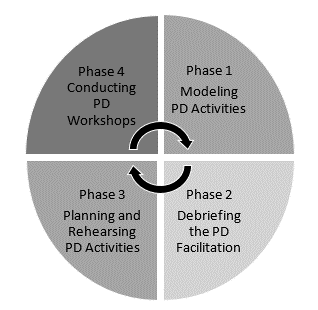 Refining a Model with Tools to Develop Math PD Leaders: An Implementation Study
Refining a Model with Tools to Develop Math PD Leaders: An Implementation Study
PI: Hilda Borko
Grade Levels Taught by Teacher Participants: 6 – 8
STEM Discipline(s): Mathematics
About the Project: This project is a research-practice partnership between Stanford University’s Center to Support Excellence in Teaching (cset.stanford.edu) and San Francisco Unified School District to build district capacity to conduct school-based professional development. The goal of the professional development was to support teachers’ implementation of their new task-based mathematics curriculum and Dimensions of Learning and Teaching to achieve the district’s mission of providing every student with high-quality instruction and equitable learning opportunities. We adapted two established models of professional development – the Problem-Solving Cycle (PSC) professional development model and Teacher Leadership Preparation (TLP) model. Video from participants’ classrooms is the central artifact of practice in these practice-based models of professional learning.
The PSC consists of three interconnected workshops, organized around a rich mathematical task. During the sequence of workshops teachers solve the task in small groups and prepare to teach it, and then use video clips from their lessons to analyze student reasoning and instructional practices in the context of video-based discussions (VBDs). The purpose of the VBDs is to help teachers notice student and teacher practices during mathematics lessons so they can improve their mathematics teaching. Video clips are purposively selected to highlight particular mathematical practices or patterns of participation. The VBDs often use focus questions to direct teacher attention to something specific such as students’ use of different representations to solve the PSC task.
The TLP prepares Teacher Leaders (TLs) to plan and lead PSC workshops with the mathematics teachers in their schools. The central component is a series of Leader Support Meetings that provide ongoing, structured guidance for the TLs as they prepare to lead PSC workshops. In a typical Leader Support Meeting focused on VBD, the TLs discuss the purpose of the upcoming PSC workshop and how a VBD can support that purpose, engage in a VBD led by the TLP facilitator, and select video clips and plan and rehearse their VBDs.
The TLPs were initially designed and led by the university project team. The district mathematics team assumed increasing responsibility for these meetings each year. During the final year of the project, they designed and led the TLPs independently.
What new knowledge is your project generating about using video for teacher learning?:
- Video is a powerful artifact for bringing the classroom into the professional learning setting.
- Video from teachers' own classrooms enhances practice-based models of professional development.
- To develop novice teacher leaders’ ability to lead VBDs effectively, there is value in having them experience a VBD as a teacher and then debrief both the planning process and the enactment as a teacher leader.
- Novice teacher leaders need support, such as criteria for selecting video clips and identifying launch questions, to plan for meaningful VBDs.
- Novice teacher leaders benefit from having time to plan and rehearse their VBDs. Rehearsals need to include targeted feedback to enhance learning.
Product(s):
- Website: https://cset.stanford.edu/research/project/problem-solving-cycle
- Peer-reviewed publications:
- Borko, H., Carlson, J., Deutscher, R., Boles, K. L., Delaney, V., Fong, A., Jarry-Shore, M. Malamut, J., Million, S., Mozenter, S., & Villa, A. M. (2021). Learning to lead: an approach to Mathematics Teacher Leader Development. International Journal of Science and Mathematics Education, 19, 121-143. https://doi.org/10.1007/s10763-021-10157-2
- Boles, K. L., Jarry-Shore, M., Villa, A. M., Malamut, J., & Borko, H. (2020). Building capacity via facilitator agency: tensions in implementing an adaptive model of professional development. In Gresalfi, M. and Horn, I. S. (Eds.), The Interdisciplinarity of the Learning Sciences, 14th International Conference of the Learning Sciences (ICLS) 2020, Volume 5 (pp. 2585-2588). Nashville, Tennessee: International Society of the Learning Sciences. https://repository.isls.org//handle/1/6625
- Villa, A. M., Boles, K. L., & Borko, H. (2019). Teacher leader learning through participation in and facilitation of professional development addressing problems of practice. In Otten, S., Candela, A. G., de Araujo, Z., Haines, C., & Munter, C. (Eds.), Proceedings of the 41st Meeting of the North American Chapter of the International Group for the Psychology of Mathematics Education (PME-NA) 2019, (pp. 594-598). St Louis, MO: University of Missouri.
- Borko, H., Carlson, J., Mangram, C., Anderson, R., Fong, A., Million, S., Mozenter, S., Villa, A.M. (2017). The role of video-based discussion in a model for preparing professional development leaders. The International Journal of STEM Education, 4(1). doi:10.1186/s40594-017-0090-3.
- Presentations:
- Borko, H. & Carlson, J. (2022, April). Refining a Model with Tools to Develop Mathematics Professional Development Leaders: An Implementation Study. Paper presented at the American Educational Research Association Annual Meeting, San Diego, CA.
- Borko, H. (2021, September). The Problem-Solving Cycle and Teacher Leadership Preparation Program: Developing and researching video-based models for professional learning. Keynote address at the Media Education Conference, Rovaniemi, Finland (virtual).
- Jarry-Shore, M., & Allen, T. (2020, December). Noticing Struggle to Support Student Understanding [Conference Presentation]. California Mathematics Council - North Conference, Pacific Grove, CA, United States.
- View more presentations
- Video: http://stemforall2018.videohall.com/presentations/1299. Presented at the 2018 STEM For All Video Showcase by Rebecca Deutscher, Hilda Borko, Janet Carlson, and Jim Ryan.
Science Teachers Learning From Lesson Analysis (STELLA): High School Biology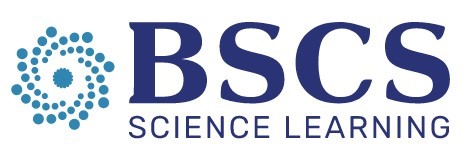
PI: Chris Wilson
Grade Levels Taught by Teacher Participants: 9 – 12
STEM Discipline(s): Biology
About the project: BSCS Science Learning has developed a nationally-recognized program for teacher professional learning called STeLLA®, Science Teachers Learning from Lesson Analysis. STeLLA is based on a 17-year line of research and development at BSCS and has demonstrated impacts on both teacher and student learning above and beyond any impacts from a traditional science teacher professional learning program. STeLLA supports teachers in learning to use effective teaching strategies through a powerful video-based lesson analysis approach. Strategies include engaging student thinking and organizing instruction in a way that connects science ideas. Teachers learn to use these strategies by analyzing classroom video and sharing their thinking in facilitated sessions with other teachers. The STeLLA program takes place over the course of one school year (typically 90 hours), during which teachers apply what they’re learning in their own classrooms.
In this project, BSCS has partnered with Jefferson County Public Schools in Louisville Kentucky, to deliver a version of the STeLLA program to one-third of the district’s high school biology teachers. Jefferson County is the first region in the United States to benefit from research on STeLLA’s effectiveness at the high school level. The goal of this research and development project was to build on a proven videocase-based analysis-of-practice model of science teacher professional learning at the elementary school level by designing, implementing, and researching a parallel, but high-school specific model for biology teachers. The program incorporates the Next Generation Science Standards by designing learning experiences for high school biology teachers modeling three-dimensional, phenomena-driven instruction and assessment. The STeLLA High School program supports teacher learning about both the NGSS and the STeLLA framework and strategies by first analyzing video-cases from expert teachers implementing three-dimensional, phenomena-driven learning using the STeLLA strategies in their classrooms, second by analyzing video from their enactment of model lessons in their own classrooms with fellow teachers in small study group settings, and finally by collaboratively designing lessons for use in their own classroom that embody three-dimensional learning and the STeLLA strategies. To accomplish this goal, BSCS created video cases consisting of model lessons and classroom video in three content areas relevant to the high school biology curriculum, natural selection, energy and matter, and genetics. Following a successful intervention, BSCS spearheaded leadership development work to develop local leadership capacity to scale up and sustain STeLLA at a district-wide level.
What new knowledge is your project generating about using video for teacher learning?: Analysis of video is used in two ways in the STeLLA High School program. First, teachers watch video of teachers in authentic classrooms to develop a common vision of the STeLLA strategies. During this time they use transcripts to hone in on specific places during instruction where they can observe and describe how the strategies impact instruction and student thinking. Later in the program, after practicing this type of analysis using clips from other teacher's classroom, they record video of their own teaching and students. Small group leaders select clips that would be productive for group analysis and teachers discuss their own use of the strategies. They not only identify strategies and student thinking but also consider the in-the-moment decisions they made during instruction or alternatives to improve their skill at creating strongly cohesive storylines or revealing and building on student thinking.
Findings: The theory of change for the STeLLA High School program is shown below, with each outcome being measured during the study.
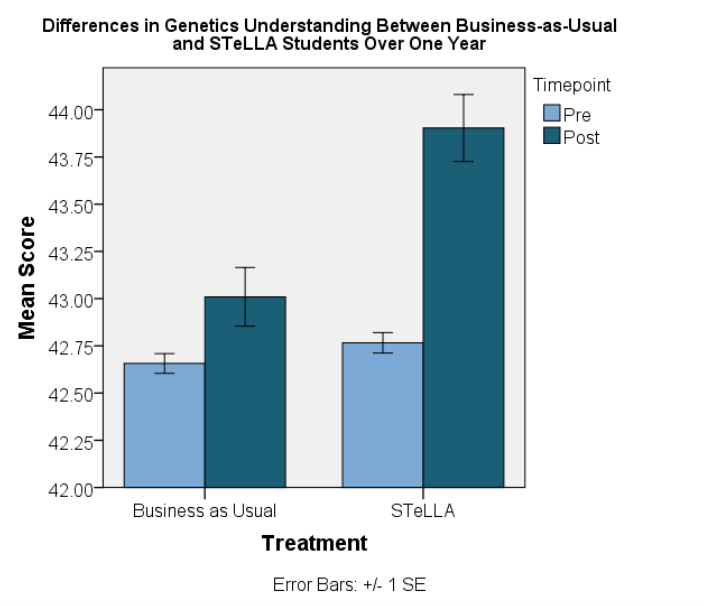 Mirroring findings from the STeLLA Colorado study in 4th and 5th grade, STeLLA High School resulted in significant impacts on students’ “1D” genetics content knowledge along the learning progression, “3D” genetics reasoning (using models and explanation/argumentation), as well as reasoning around natural selection (see right bar graph; click to enlarge).
Mirroring findings from the STeLLA Colorado study in 4th and 5th grade, STeLLA High School resulted in significant impacts on students’ “1D” genetics content knowledge along the learning progression, “3D” genetics reasoning (using models and explanation/argumentation), as well as reasoning around natural selection (see right bar graph; click to enlarge).
The program also had a significant impact on teacher PCK and classroom practice (see graphs below; click to enlarge). However, unlike in 4th and 5th grade, there were no significant impacts on teachers’ science content knowledge. This finding is not surprising given the greater preparation high school biology teachers receive in science, and how deepening teachers’ biology content knowledge became less of a focus of the professional learning.
As for the leadership program, the participants reported being greatly impacted by and grateful for the opportunity to be involved in the leadership program. In interviews and surveys, each described learning, growing, experiencing challenges, and reflecting on their own path as a teacher and teacher leader.
Product(s):
- The STeLLA High School resources are regularly updated with new content: https://www.stella4hsbio.org/
- More information on the broader STeLLA line of research: https://bscs.org/rd-programs/stella-science-teachers-learning-from-lesson-analysis/
Teaching Amidst Uncertainty: Developing Mathematics Teachers' Groupwork Monitoring Practices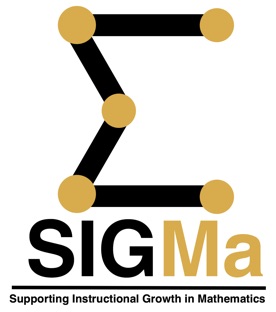
PI: Ilana Horn
Grade Levels Taught by Teacher Participants: 6 – 12
STEM Discipline(s): Mathematics
About the Project: Through this partnership, Project Sigma worked with teachers that are affiliated with a professional development online (PDO), all of whom have 5 or more years of teaching experience. Together, we are co-developing a video-based formative feedback (VFF) approach to coaching to provide experienced teachers with information on their classroom instruction that is timely, adequate, and helps them make sense of problems of practice.
Our data collection centers on our partner teachers, school-based teams of the PDO who have agreed to participate in our study as we make sense of the feedback process. In all, we have partnered with 6 teacher teams over Phase 2 of the project, getting multiple opportunities to visit their schools, film their classrooms, and delve into the details of their teaching with them. We film our conversations about their teaching, which is a critical part of our data corpus, as this is where much of their sensemaking is revealed. Additionally, we shadow them during professional developments, interview them several times a year, and have many informal exchanges along the way.
These focal teachers are accomplished mid-career mathematics teachers—most have obtained or are near completing National Board Certification, and have between 5-25 years of teaching experience.
What new knowledge is your project generating about using video for teacher learning?: The rich video representations of instruction were a tremendous source of learning. For our teachers, many important learning moments happened because they could see and hear their students interacting without them. Sometimes, students affirmed what teachers had hoped in their instructional designs — teachers were delighted to hear students talking about mathematics, debating each other's ideas, and building on each other's arguments. Such affirmations matter, since refining practice should account for aspects of teaching that are working as intended. In these instances, teachers were enthused to see how their instructional practices aligned with their pedagogical commitments. The VFFs could be equally valuable when lessons did not go as planned, since the debrief gave them resources to revisit and probe what happened. Learn more.
Product(s):
- Website: https://my.vanderbilt.edu/sigma/
- Book: Teacher Learning of Ambitious and Equitable Mathematics Instruction: A Sociocultural Approach By: Ilana Horn and Brette Garner
- Publication and Presentations
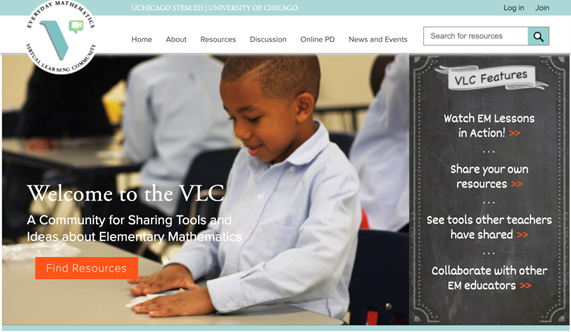 Understanding and Improving Learning from Online Mathematics Classroom Videos
Understanding and Improving Learning from Online Mathematics Classroom Videos
PI: Michelle Perry
Grade Levels Taught by Teacher Participants: K – 6
STEM Discipline(s): Mathematics
About the Project: Because of the promise of video-based learning, many professional developers have endeavored to take this learning to scale through the online space, yielding several high profile and popular online communities allowing teachers to access video. Given the as-yet-unfulfilled promise of these sites to provide career-long supports for teachers of elementary mathematics, we investigated several major issues in the design and practice of effective online video-based Virtual Learning Communities (VLCs) for teachers—especially those that provide asynchronous and unfacilitated professional learning opportunities—and examined the relation between teachers’ reflective engagement with these videos and their students’ mathematics learning outcomes.
Our goals for this project were to (1) investigate how teacher learning from online mathematics lesson videos can be facilitated and enhanced, (2) explore how such learning relates to student outcomes in mathematics, and (3) improve the design of an existing online learning community (the “VLC”) based on the findings of this project. We highlight findings from our first goal here.
To address Goal 1, we conducted: (1) an interview study of teachers who are members of the VLC; (2) an experimental study of conditions that impact teachers’ immediate reflections on online videos, and (3) a study of the relationship between teachers’ reflective reactions to video cases and their implicit theories about learning mathematics and about teaching mathematics.
What new knowledge is your project generating about using video for teacher learning?:
- We conducted an interview study with elementary-school teachers who were enrolled as members on the VLC website. In this investigation, we probed their use of and learning from the videos posted on the website. Teachers gave compelling evidence that they learned from the videos posted on the VLC. They reported that the videos provided them with the opportunity to view and reflect on model lessons, plan curricula, and consider student thinking, among other learning outcomes. This was true even for teachers for whom website-use data indicated that they were rare users of the VLC.
In this study, we also investigated teachers’ sense of community, despite the fact that the community was online and asynchronous. We know that having a sense of community can support teacher growth in face-to-face professional development, but teachers in online, asynchronous professional development might not feel a sense of community, given their isolation, both physically and temporally. To be successful, the learning must be enacted (in classrooms), but the community is ephemeral. Using grounded theory, the transcripts of the interviews were coded to reveal members’ perceptions of community in this online space. Results suggest that most considered themselves as part of the community, and, importantly, see this as a space in which to share material resources.
- We conducted an experiment to investigate which features of videos impact teachers’ reflection on videos. The experimental data—examining how prompts, mathematical content, camera focus, and motivation for commenting impacted 300 educators’ reflective comments—indicated that prompts targeted at specific focal areas (teachers, students, mathematics) not only yielded more comments, but also these comments revealed more deep reflection on the targeted areas than on areas not targeted in the prompt. We see this as significant, given that in-person PD typically takes significantly more time to engage teachers to become more deeply reflective.
This study also produced a challenging result: although targeted prompts could increase reflection on a primary focal area, they could also decrease reflection on other focal areas. Teaching-focused prompts resulted in decreased reflection on student thinking and mathematics; student thinking-focused and video-specific prompts resulted in decreased reflection on teaching. This is perplexing because a common goal of many professional development efforts is to help teachers improve their understanding of student thinking in a subject matter and to root their subsequent teaching moves in that understanding. If focusing on student thinking or teaching makes educators think less about the other, this is a divide that clearly needs bridging. This issue is compounded by the fact that study participants reported more likelihood to change their practice based on teacher-focused, rather than student-focused, videos; this divide also needs to be overcome.
In general, these findings have implications for professional developers and those who provide teacher-learning opportunities and who use video-based learning in either in-person or online spaces. This study makes clear the importance of prompts (and, by extension, facilitation) for teacher reflection. It also illustrates that video content—including camera focus and mathematical topic—can have profound effects on teachers’ reflective outcomes. However, it is also clear that professional developers must match their video content and prompts to their professional learning objectives. Seemingly subtle features of videos can promote different reflection outcomes. Although we clearly face the challenge, going forward, to find effective ways to promote critical outcomes with lesson video, we are encouraged that we have shed light on impacting teacher reflection, which has the potential to be implemented at scale.
- We also investigated the relation between teachers’ implicit theories both of mathematics intelligence and of mathematics teaching. Previously, others have documented that teachers who endorse a growth mindset about students’ mathematics intelligence are supportive of their students’ learning of mathematics. In this study, we provided evidence that having a growth mindset about teaching could serve teachers well as they seek to improve their practice because growth mindset about teaching is positively and significantly related to their reflection about student thinking and mathematics. Thus, challenging the assumption that good teachers are born, not made, and making explicit the assumption that good teachers are made, not born, might prove useful in PD settings. Understanding if and how this actually supports teacher learning deserves further investigation. More generally, these findings point to intriguing possibilities about whether fostering growth mindsets (of mathematics intelligence and of teaching ability) in professional development settings might be leveraged to promote teacher reflection.
Products:
- Recent publications:
- Beilstein, S. O., Henricks, G. M., Jay, V., Perry, M., Bates, M. S., Moran, C. G., & Cimpian, J. R. (2021). Teacher voices from an online elementary mathematics community: Examining perceptions of professional learning. Journal of Mathematics Teacher Education, 24(3). 283-308. https://doi.org/10.1007/s10857-020-09459-z
- Henricks, G., Jay, V., Beilstein, S., Perry, M. Bates, M., Moran, C., & Cimpian, J. (2019). Foundations of community in an online, asynchronous professional development website. In C. Hmelo-Silver, G. Gweon, & M. Baker (Eds.). A wide lens: Combining embodied, enactive, extended, and embedded learning in collaborative settings, 13th International Conference on Computer Supported Collaborative Learning (CSCL) 2019(577-580). Lyon, France: International Society of the Learning Sciences.
- Perry, M., Bates, M. S., Cimpian, J., Beilstein, S. O., & Moran, C. (2022). Impacting teachers’ reflection on videos. Teaching and Teacher Education: Leadership and Professional Development. https://doi.org/10.1016/j.tatelp.2022.100003
- View the full list of publications and presentations.
 Video in the Middle: Flexible Digital Experiences for Mathematics Teacher Education
Video in the Middle: Flexible Digital Experiences for Mathematics Teacher Education
PI: Nanette Seago
Grade Levels Taught by Teacher Participants: 6 – 10
STEM Discipline(s): Mathematics
About the Project: The Video in the Middle (VIM) project is an online video-based professional development (PD) that includes over thirty freely available, two-hour, asynchronous PD modules designed to expand teachers’ mathematical knowledge and instructional practice related to linear functions. The modules are centered around short video clips of real classrooms to make high-quality, research-based PD accessible to more secondary mathematics teachers. These flexible modules can be delivered through asynchronous facilitation by a WestEd facilitator or local PD provider, or as a structured independent PD experience without facilitation.
Each module follows a common set of structured activities, where a video clip is the centerpiece of the professional learning experience as teachers engage online in mathematical problem solving, video analysis of classroom practice, and pedagogical reflection. All modules are designed so teachers have repeated opportunities to examine and compare a variety of mathematical methods and representations around linear pattern tasks and to analyze the complex relationships among content, pedagogy, and student thinking. Teachers access alternative perspectives and representations from students, peers, mathematicians, and educators. All activities and materials are explicitly rooted in teacher practice, for example, through the use of authentic, unedited videos of classroom interactions, and represent a practice-based theory of professional learning.
The guiding research question of the VIM project study is: How does VIM participation support mathematics teacher learning related to effective mathematical teaching practices, and does teacher learning differ by facilitation format? Preliminary research shows that in-service and pre-service teachers, local PD providers, and teacher educators found the modules engaging and relevant to their work, regardless of facilitation format (WestEd-facilitated, local provider-facilitated, or structured independent).
What new knowledge is your project generating about using video for teacher learning?: Across all three formats of VIM module facilitation, teachers showed evidence of learning consistent with the VIM module goals. All three formats of VIM module facilitation were designed and structured following researched-based structure and design principles. The trends in analyses of teachers’ written responses show promising preliminary evidence of teacher learning related to NCTM’s (2014) Mathematical Teaching Practices and emphasizes the strength of all three asynchronous online facilitation formats. This analysis provides initial impact evidence for independent, asynchronous PD, when it is well designed and structured. These results support those of Heck et al. (2019), which suggest that the participation format of a PD experience is less critical than the presence of the key design features.
Product(s):
- Website: http://videointhemiddle.com
- Publications:
- Seago, N. & Knotts, A. (2021). Impact of the Design of an Asynchronous Video-Based Learning Environment on Teacher Noticing and Mathematical Knowledge. Journal of Higher Education Theory and Practice, Vol. 21, Iss. 4, 190-206. West Palm Beach, FL
- Seago, N., Knotts, A. & Carroll, C. (2021). Design and impact of flexible asynchronous online video-based mathematics professional development. NCSM Journal, Summer 2021, Vol. 22, Number 1.
- Conference Presentations (Past and upcoming accepted):
- Asynchronous Online Video-based Modules to Support Mathematics Teachers’ Professional Learning (Nanette Seago and Angela Knotts) EARLI 2021: August 2021 (Virtual conference): ICT Demonstration and Poster Session
- Designing asynchronous video-based professional development for mathematics teacher educators (Nanette Seago and Angela Knotts) 12th Congress of the European Society for Research in Mathematics Education (CERME12): Virtual conference: February 2-6, 2022.
- Design and Effect of Video-based Asynchronous Mathematics Professional Development (Nanette Seago, Jill Neumayer DePiper and Angela Knotts) EARLI Sig 11: June 22-21,2022 (Oldenburg, Germany)
- Asynchronous Mathematics PD: Design and facilitation format effects on teacher learning (Nanette Seago, Angela Knotts and Jill Neumayer DePiper) The 45th conference of the International Group for the Psychology of Mathematics Education: July 18-23, 2022 (Alicante, Spain)
- Design of asynchronous teacher professional development and its effects on mathematics teacher learning (Nanette Seago, Jill Neumayer DePiper and Angela Knotts). ERME Topic Conference, 2022: Language in the Mathematics Classroom. September 7-10, 2022 (Oxford, United Kingdom)
- Supporting Communities of Inquiry in Asynchronous, Online Mathematics Professional Development (Angela Knotts, Nanette Seago and Jill Neumayer DePiper). PMENA, 2022 (Nashville, Tennessee)
Additional Resources
- Articulating Design Principles for Productive Use of Video in Preservice Education | Authors: Hosun Kang, Elizabeth A. van Es
- The Design of Video-Based Professional Development: An Exploratory Experiment Intended to Identify Effective Features | Authors: Mary Beisiegel, Rebecca Mitchell, Heather C. Hill
- Understanding affordances and challenges of three types of video for teacher professional development | Authors: Meilan Zhang, Mary Lundeberg, Matthew J. Koehler, Jan Eberhardt
Related Spotlights

